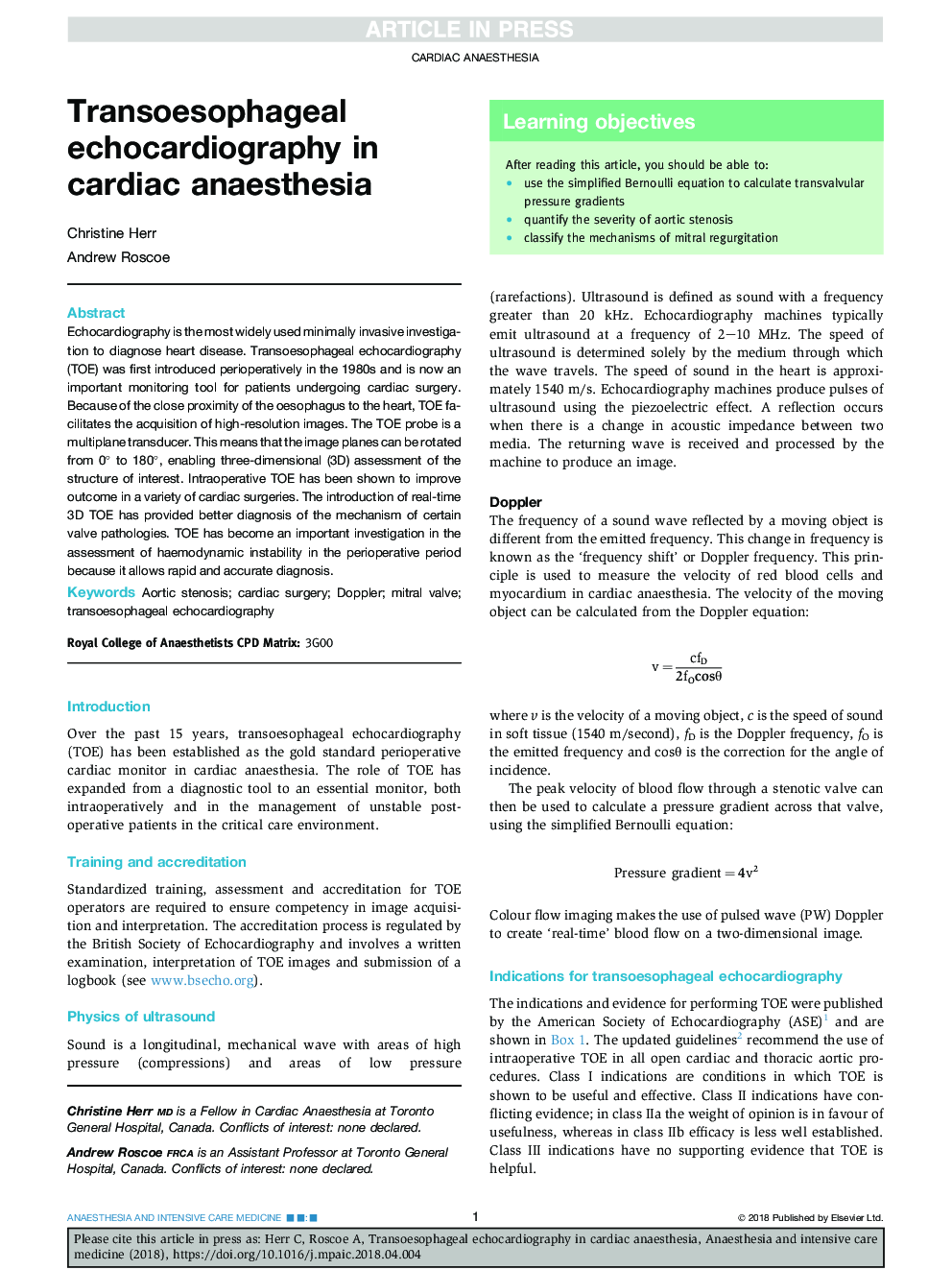| Article ID | Journal | Published Year | Pages | File Type |
|---|---|---|---|---|
| 8609867 | Anaesthesia & Intensive Care Medicine | 2018 | 7 Pages |
Abstract
Echocardiography is the most widely used minimally invasive investigation to diagnose heart disease. Transoesophageal echocardiography (TOE) was first introduced perioperatively in the 1980s and is now an important monitoring tool for patients undergoing cardiac surgery. Because of the close proximity of the oesophagus to the heart, TOE facilitates the acquisition of high-resolution images. The TOE probe is a multiplane transducer. This means that the image planes can be rotated from 0° to 180°, enabling three-dimensional (3D) assessment of the structure of interest. Intraoperative TOE has been shown to improve outcome in a variety of cardiac surgeries. The introduction of real-time 3D TOE has provided better diagnosis of the mechanism of certain valve pathologies. TOE has become an important investigation in the assessment of haemodynamic instability in the perioperative period because it allows rapid and accurate diagnosis.
Related Topics
Health Sciences
Medicine and Dentistry
Anesthesiology and Pain Medicine
Authors
Christine Herr, Andrew Roscoe,
